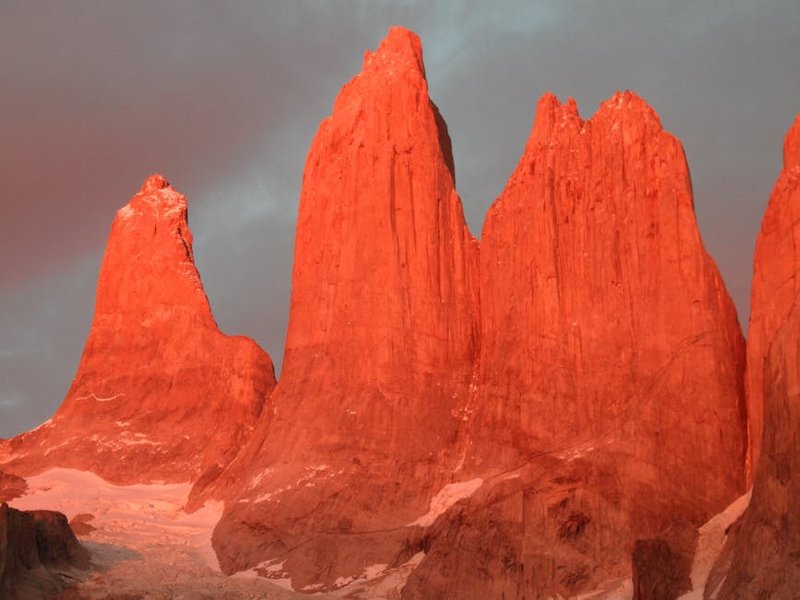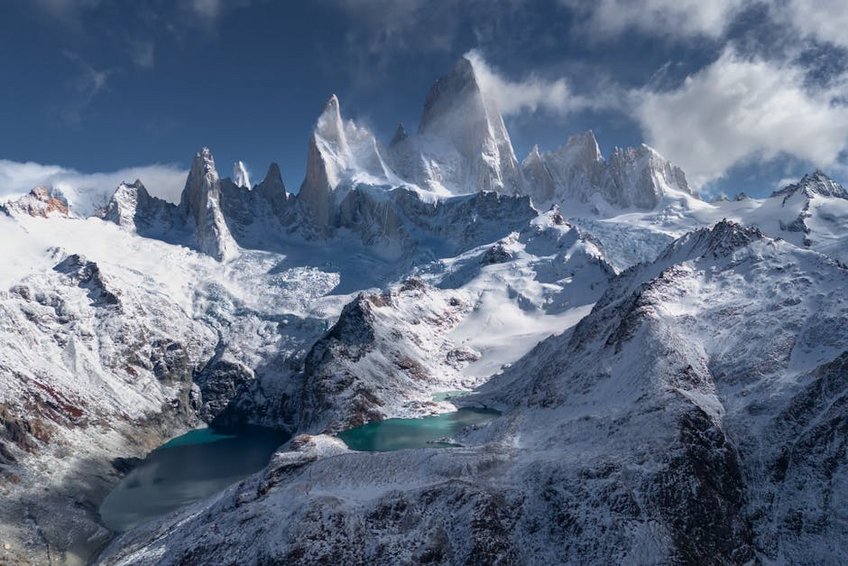Trekking Adventure in Patagonia: Your Ultimate Guide to Exploring the Wild Frontier
Embarking on a trekking adventure in Patagonia represents one of the most rewarding experiences any outdoor enthusiast can undertake. This vast wilderness spanning southern Chile and Argentina offers some of the planet’s most dramatic landscapes, from towering granite peaks and massive glaciers to pristine lakes and windswept plains. Your Patagonia trekking adventure will challenge you physically while rewarding you with breathtaking vistas that few other destinations can match. The region’s famous trails like the W Trek in Torres del Paine and the Fitz Roy Massif in El Chaltén attract hikers from across the globe, yet still retain their wild, untouched character. Proper preparation is essential for this remote corner of the world, where weather changes rapidly and facilities are limited. This comprehensive guide will walk you through everything you need to know to plan your perfect Patagonia trekking adventure, from choosing the right season to packing the essential gear that will keep you safe and comfortable on the trail.
Trekking Adventure in Patagonia Essential Information – What Every Hiker Must Know
Understanding Patagonia’s unique characteristics will significantly enhance your trekking adventure in this remarkable region. The area encompasses approximately 400,000 square miles of diverse terrain, with the Andes Mountains creating a natural border between Chile and Argentina. Your Patagonia trekking adventure will likely focus on two primary areas: Torres del Paine National Park in Chilean Patagonia and Los Glaciares National Park in Argentine Patagonia. These parks feature world-renowned trails that vary in difficulty from moderate day hikes to challenging multi-day expeditions requiring advanced backcountry skills. The weather remains notoriously unpredictable throughout the region, with strong winds that can reach up to 100 mph and conditions that can change from sunny to stormy within minutes. This demands careful planning and flexible itineraries for your Patagonia trekking adventure.
Geographical Overview and Key Regions
- Chilean Patagonia features Torres del Paine National Park with its iconic granite towers, Grey Glacier, and the famous W and O Circuit treks spanning 37-76 miles
- Argentine Patagonia centers around El Chaltén, known as the trekking capital, with access to Mount Fitz Roy, Cerro Torre, and numerous glacier lakes
- The Southern Patagonian Ice Field, the world’s third largest freshwater reserve, influences weather patterns and creates spectacular glacial landscapes throughout the region
- Budget trekkers can manage with $50-75 per day by camping, preparing their own meals, and using public transportation between trailheads
- Mid-range travelers should budget $100-150 daily for refugio accommodations, restaurant meals, and guided day hikes in addition to independent trekking
- Luxury experiences including guided multi-day treks with full support, premium accommodations, and private transfers range from $250-500 per day
- Torres del Paine National Park Official Site
- Lonely Planet Patagonia Travel Guide
Climate and Weather Patterns
Patagonia’s weather presents the most significant challenge for trekkers, with conditions that can test even experienced outdoors enthusiasts. The region experiences strong westerly winds that intensify during the summer months (December-February), sometimes making walking difficult. Precipitation varies dramatically between east and west sides of the mountains, with the Chilean side receiving more rainfall. Temperatures range from 40-70°F (4-21°C) during trekking season, but can drop below freezing at night even in summer. The infamous Patagonian wind not only affects comfort but also safety, as gusts can make exposed sections of trail hazardous. Understanding these patterns will help you prepare adequately for your Patagonia trekking adventure.

Trekking Adventure in Patagonia Planning Your Trip – Seasons, Budget and Preparation
Careful planning transforms your Patagonia trekking adventure from a dream into a reality. The remote location and challenging conditions demand thorough preparation regarding timing, budget allocation, and gear selection. Most trekkers visit during the Southern Hemisphere summer (December to March) when temperatures are mildest and daylight hours extend until 10 PM, allowing for longer hiking days. However, this also coincides with peak season, meaning higher prices and more crowded trails. Shoulder seasons (October-November and April) offer fewer crowds and unique seasonal changes but come with greater weather risks. Your budget should account for international flights, park fees, equipment rentals if needed, and the higher costs of food and accommodation in remote Patagonian towns. Proper physical preparation is equally important, as trails often involve significant elevation gain and challenging terrain.
Best Time to Visit Patagonia for Trekking
The optimal time for your Patagonia trekking adventure depends on your priorities regarding weather, crowds, and photography conditions. Summer (December-February) offers the most reliable weather with longer daylight hours, but also the highest number of visitors. Shoulder months like November and March provide a good balance with fewer people and still acceptable conditions, though colder temperatures and increased wind. April presents autumn colors but shorter days and greater precipitation risk. Winter trekking (May-September) is only for experienced mountaineers with proper cold-weather gear. For most visitors, January through March provides the best combination of accessibility and favorable conditions for a memorable Patagonia trekking adventure.
Budget Planning and Costs for Patagonia Trekking
Essential Preparation Checklist
Physical preparation should begin at least 2-3 months before your Patagonia trekking adventure, focusing on cardiovascular endurance and leg strength. Regular hiking with a loaded backpack provides the best simulation of trail conditions. Research and book accommodations well in advance, especially refugios in Torres del Paine which often sell out months ahead during high season. Ensure your passport is valid for at least six months beyond your planned departure date, and check visa requirements for both Chile and Argentina based on your nationality. Create a detailed gear list that accounts for Patagonia’s variable conditions, emphasizing wind and rain protection. Finally, develop flexible itineraries that allow for weather disruptions without compromising your entire trip.
Trekking Adventure in Patagonia Top Attractions and Activities – Must-See Highlights
Your Patagonia trekking adventure will showcase some of the most spectacular natural wonders on Earth, each offering unique experiences and photographic opportunities. The iconic granite towers of Torres del Paine give the park its name and provide a dramatic backdrop for the entire trekking experience. The W Trek remains the most popular route, covering approximately 50 miles over 4-5 days and passing highlights like Grey Glacier, French Valley, and the base of the towers themselves. On the Argentine side, the Fitz Roy Massif presents equally stunning scenery with its jagged peaks often compared to the Matterhorn. Laguna de Los Tres provides the classic viewpoint after a challenging ascent, rewarding hikers with one of Patagonia’s most photographed scenes. Beyond these famous landmarks, countless lesser-known trails offer solitude and equally impressive landscapes.
Must-See Highlights and Iconic Viewpoints
No Patagonia trekking adventure would be complete without experiencing its most celebrated viewpoints, each requiring effort to reach but offering unforgettable rewards. The Mirador Las Torres viewpoint involves a steep climb to witness the three granite towers reflected in a glacial lake at sunrise—an experience that defines many visitors’ trips. In Los Glaciares National Park, the hike to Laguna de Los Tres brings you to the base of Mount Fitz Roy, with the turquoise lake creating a perfect foreground for the iconic peak. Perito Moreno Glacier, while not typically part of multi-day treks, offers walking opportunities on the ice itself through guided tours. The John Gardner Pass on the O Circuit provides panoramic views of the Southern Patagonian Ice Field, the largest non-polar ice cap in the world. Each of these highlights justifies the physical effort required to reach them during your Patagonia trekking adventure.
Hidden Gems and Local Favorites
Beyond the well-trodden paths, your Patagonia trekking adventure can include spectacular lesser-known destinations that offer solitude and unique experiences. The Dientes de Navarino circuit on Navarino Island south of Tierra del Fuego represents the southernmost trek in the world, with raw, untouched landscapes and virtually no other hikers. Lago del Desierto near El Chaltén offers beautiful day hikes with views of the Northern Ice Field and opportunities for boat excursions. The Sierra Valdivieso area features dramatic red rock formations contrasting with green valleys, rarely visited by international tourists. The Paso de las Nubes (Pass of the Clouds) trek connecting El Chaltén to Lago del Desierto provides a challenging alternative route with incredible views. These hidden gems allow for a more intimate Patagonia trekking adventure away from the main tourist trails.
Trekking Adventure in Patagonia Practical Travel Information – Transportation and Accommodation
Navigating the logistics of your Patagonia trekking adventure requires understanding the region’s limited infrastructure and planning accordingly. Most international travelers fly into Buenos Aires or Santiago, then take domestic flights to Punta Arenas (for Chilean Patagonia) or El Calafate (for Argentine Patagonia). From these gateway cities, buses provide the primary transportation to trailheads, with services to Puerto Natales (gateway to Torres del Paine) and El Chaltén (trekking capital of Argentina). Accommodation options range from camping and mountain refugios to luxury hotels in nearby towns. Advance reservations are essential, especially for refugios in Torres del Paine which often book out 6-9 months in advance during high season. Understanding these practical aspects will ensure your Patagonia trekking adventure runs smoothly from arrival to departure.
| Category | Options/Features | Price Range (USD) |
|---|---|---|
| Camping | Designated sites with basic facilities, some with pre-pitched tents | $10-25 per night |
| Mountain Refugios | Dormitory-style accommodation with meals available | $50-100 per night |
| Hostels/Guesthouses | Private or shared rooms in nearby towns | $30-80 per night |
| Hotels/Lodges | Comfortable accommodations with amenities | $120-300+ per night |


